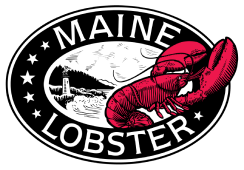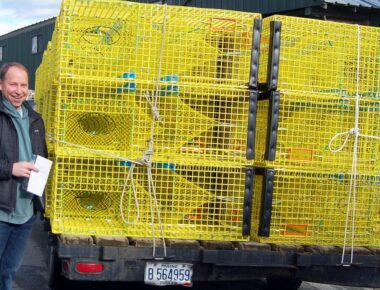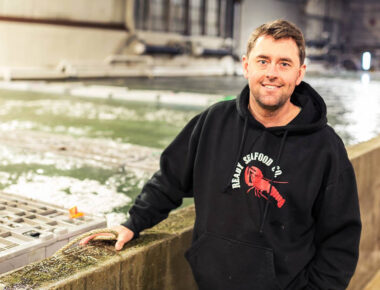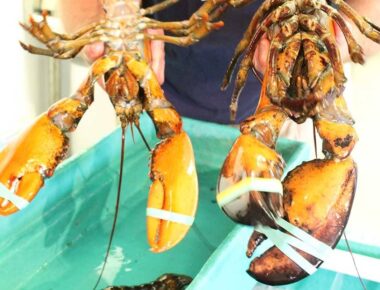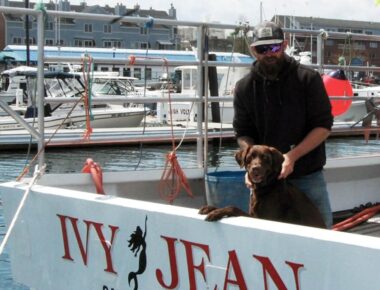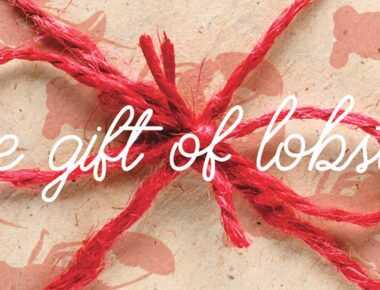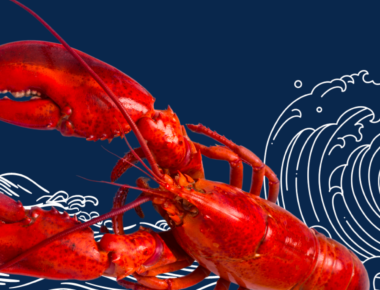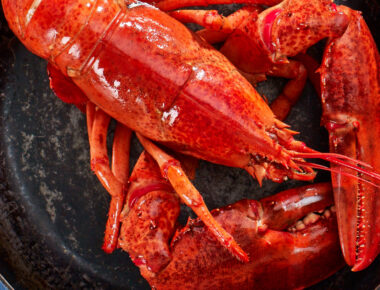The Maine Lobster fishery is one of the most sustainable fisheries in the world. And it didn’t become that way overnight. For generations, lobstermen, lawmakers and scientists have been working together to sustain the lobster resource and Maine’s marine environment.
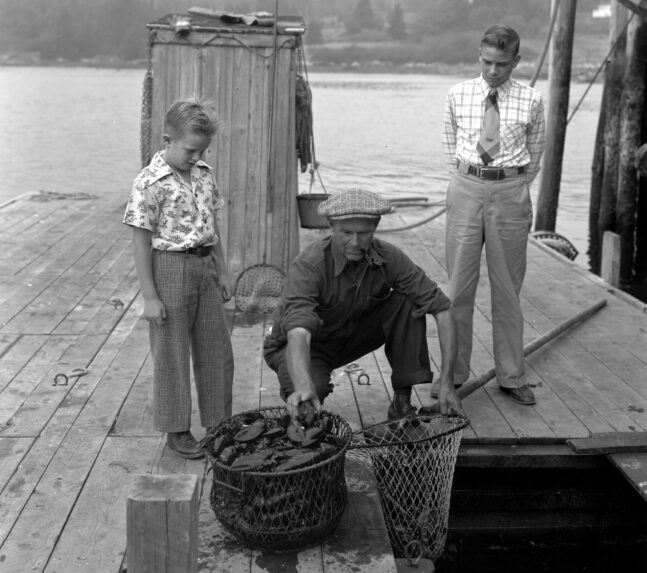
THE START
Before the state of Maine was even established, lobster was plentiful for the Indigenous Americans and colonists who called the land their home. The crustacean was so plentiful, in fact, it was often used as fertilizer for growing crops.
But as technology improved, lobster was commercialized and shared along the coast starting in the 1840s. As canneries were established and more lobstermen began to harvest in Maine’s waters, the lobster supply began to dwindle and it was clear something had to be done to avoid depleting the lobster resource. Over the course of 25 years, lobstermen, dealers and locals petitioned lawmakers to take action. And they did.
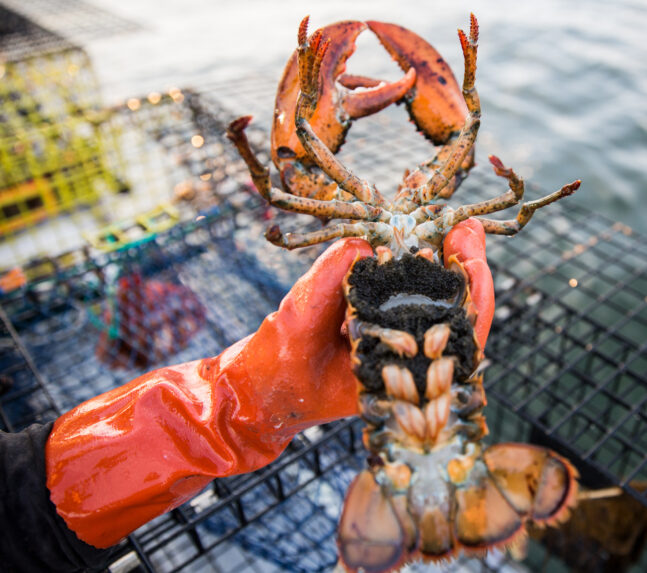
1872
Harvesting egg-bearing female lobsters was outlawed
1874
Seasonal minimum and maximum size limits were set to limit canning
Without much change to the lobster population, it became clear that canners were causing many of the issues. They killed many lobsters in transit, used 5 lbs. of lobster to pack 1 lb. and relied on undersized lobsters frequently. As a result, lobstermen lobbied the legislature to do something about it – and together, they passed a series of laws that limited the devastation of canneries until many were abandoned.
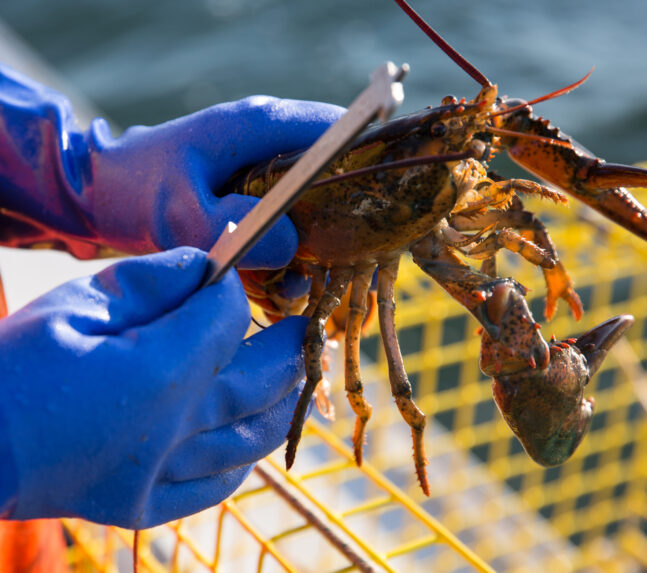
1879
Canning lobster during peak season became illegal
1883
Harvesting small lobsters during peak season was outlawed
1895
Year-round minimum size limits were set, protecting juvenile lobsters until they reached maturity
FIGHTING STAGNATION
Maintaining the lobster supply was not solved with just a few laws. Due to a series of issues in the early 1900s, including a lack of law enforcement, the Great Depression, and international competition, Maine lobstermen were in a crisis. Not only were lobster stocks low, but lobstermen were struggling to make a living. They couldn’t sell large lobsters, because few could afford it, and imported lobsters were cheaper because other countries did not have minimum size limits. As a result, they continued to work with the Maine legislature to determine a path forward.
After much debate, new legislation was introduced to set the lobster supply back on the right course:
1933
A double gauge law was enacted to establish both a minimum and maximum size limit for catching lobster
Catches recovered during World War II and remained consistent, showing the entire state of Maine the power of effective conservation laws. As a result, many lobstermen and harvesters began sanctioning those who violated conservation laws and effectively drove them out of business. Due to successful harvests, few new laws were introduced, but lobstermen were consistently open to new ways to improving conservation. They worked with the Maine legislature to introduce new laws, including:
1948
The “V-Notch” law was put into effect where lobstermen would cut a notch on egg-bearing female lobsters to mark her as a good breeder – a practice that was already widely used by lobstermen. The law made it illegal to possess a notched lobster, protecting breeding females for life
1979
Escape vents were implemented to allow undersize lobsters to escape from traps, resulting in less handling of immature lobsters
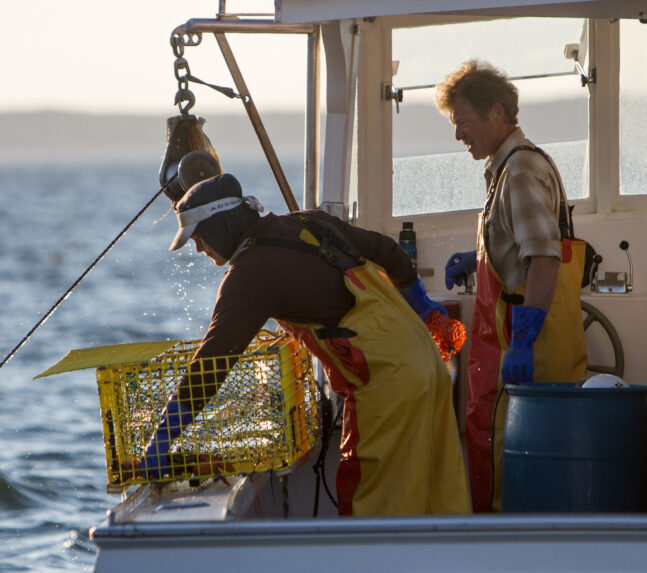
MODERN DAY
Due to a series of legislative changes with the larger fishing industry, the federal government became responsible for the management of waters between 3 and 200 miles offshore. As a result, a new procedures were introduced to continue to sustain the lobster resource:
1995
The ‘Zone Management’ law was passed, setting a statewide limit to the number of traps each license holder is allowed to fish and requiring an apprenticeship for new lobstermen wishing to enter the fishery
Additionally, a series of protections were established to protect the North Atlantic right whale, an endangered species. The industry has been proactive in taking measures to ensure their safety, including:
1997
Removed all surface float rope from the water and weakened links to allow for right whales to break free in the event they come in contact with Maine gear
2000
Marked gear to identify origins in case of issues
2009
Replaced 27,000 miles of floating ground line with whale-safe sinking line
2015
Required minimum traps per buoy line to reduce vertical lines in the water
2020
Marked all vertical lines with Maine-specific indicators
2021
Implemented seasonal closures
2022
Converted all gear to include weak links and weak rope
Maine lobstermen are stewards of the sea and have been passing down a legacy of sustainability for decades. In fact, their early adoption of sustainable practices made them pioneers in the fishing industry. Over the years, many other fisheries have adopted their practices to sustain their lobster population and marine environments. Learn More
